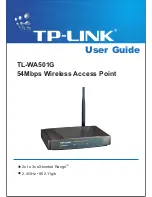
-13-
v7.0
RFID 13.56 MHz and NFC
7. RFID 13.56 MHz and NFC
The aim of this chapter is to explain the differences between RFID @ 13.56 MHz and NFC.
As said before, the NFC technology is defined by protocols like ISO/IEC 18098 and NFCIP-1. NFC is an extension of RFID @ 13.56
MHz (ISO/IEC 14443-A/Mifare® protocols) and bases on those protocols to build a technology which focuses on allowing an
instant and easy dialog between advanced electronic devices like smartphones. While RFID is meant to interchange very little
amounts of data (few bytes), NFC is meant to interchange bigger amounts of data.
Libelium’s RFID/NFC module supports both operations in a native way: RFID @ 13.56 MHz (ISO/IEC 14443-A/Mifare® protocols)
and NFC (NFCIP-1), but Libelium has not implemented software functions to handle the NFC operations. The reason to that
is that the most important applications of the RFID/NFC module for Wireless Sensor Networks are identifying and reading/
writing cards and tags, and not interchanging big amounts of data in very short range communications. Besides, only the most
advanced smartphones support NFC, so there are not many potential users yet with NFC-capable phones.
To sum up, the applications which benefit the most from the RFID/NFC module are those related to access control, logistics,
assets tracking, supply chain, etc.














































